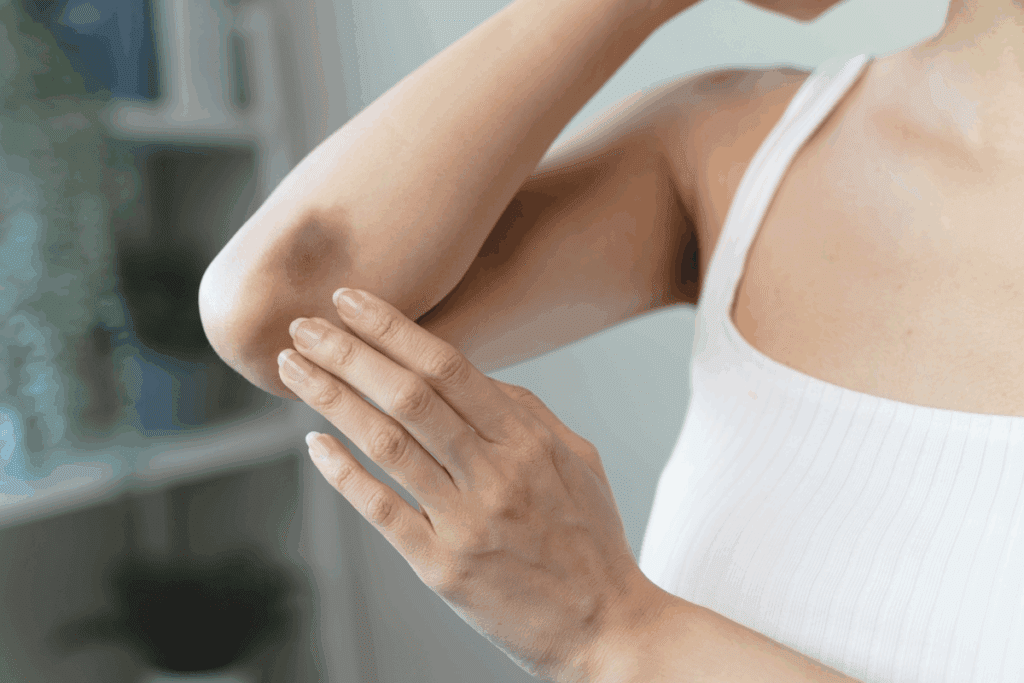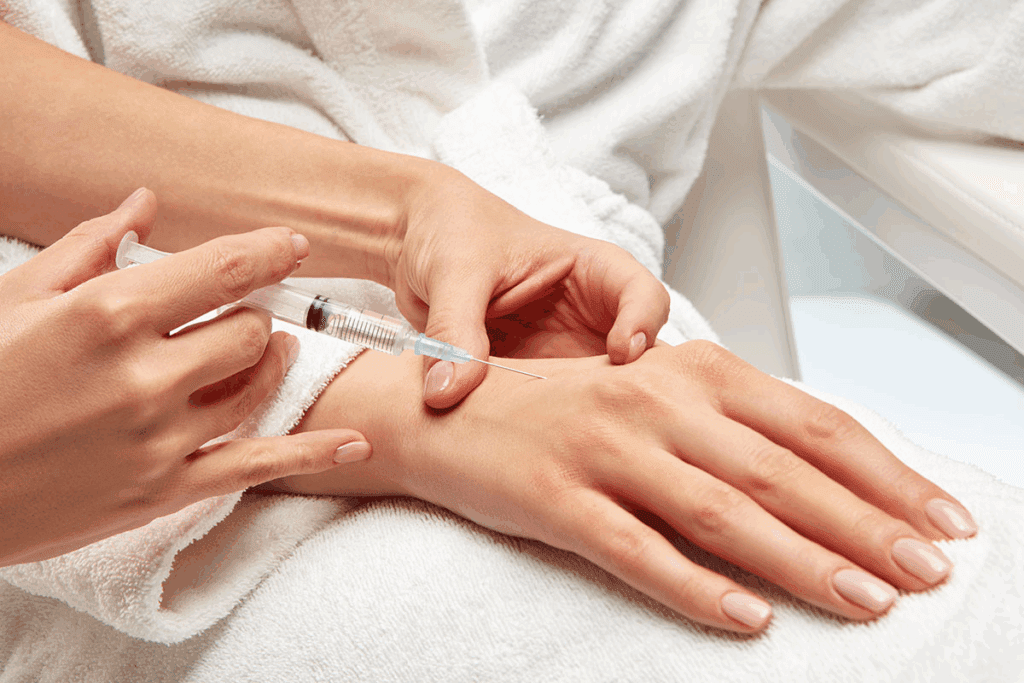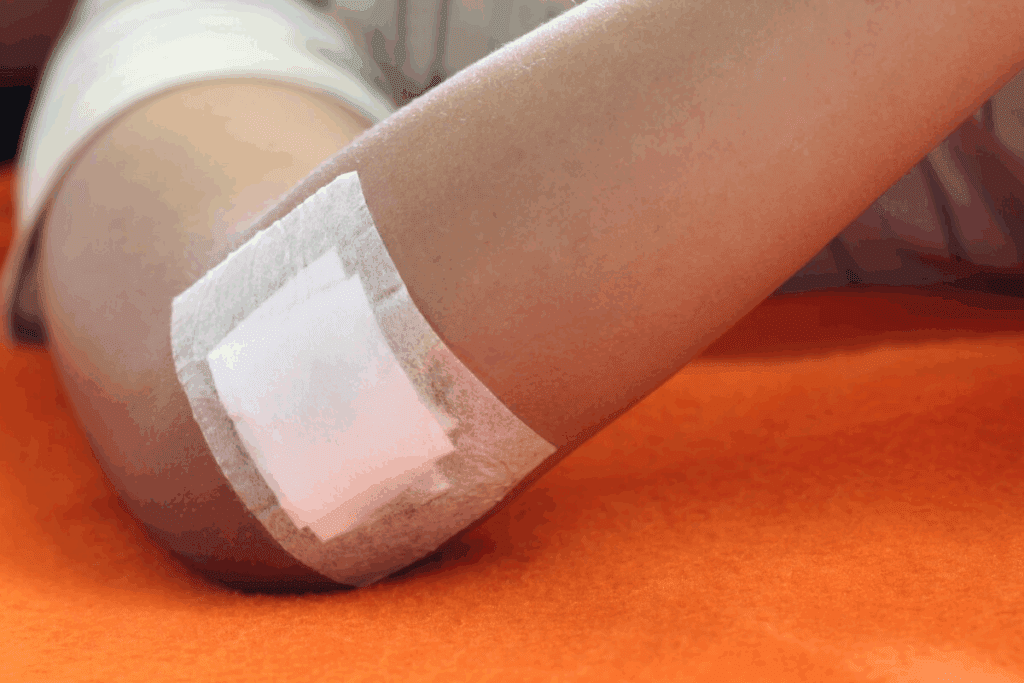Last Updated on November 26, 2025 by Bilal Hasdemir

How to reduce Bruising after surgery is a common reaction to the damage of small blood vessels. Managing post-surgical bruising is key to faster healing and less pain. At Liv Hospital, experts stress the need for a complete plan to lessen bruising and speed up recovery.
To reduce bruising, you can try several methods. Wearing compression garments, using cold packs, and keeping the area elevated are helpful. Also, taking vitamin C and arnica supplements can aid in healing. By knowing why bruising happens and using these steps, patients can make their recovery better.

Surgical bruising is common after many operations. It happens because of blood vessel damage during surgery. This damage lets blood leak into the tissues, causing the bruise.
Bruising is the body’s reaction to surgery. When blood vessels are hurt, blood leaks into the tissues. This leads to bruising.
The amount of bruising can change. It depends on the surgery, the surgeon’s skill, and the patient’s health.
Factors influencing post-surgical bruising include:
Bruising looks different at first, often blue or purple. This is because of the blood’s hemoglobin. As it heals, the bruise changes color to green, yellow, and then fades.
| Color | Stage of Healing |
| Blue/Purple | Initial stage, presence of hemoglobin |
| Green | Biliverdin formation as hemoglobin breaks down |
| Yellow | Bilirubin formation, further breakdown |
Most bruising goes away in 1-2 weeks after surgery. The time it takes can vary. Knowing this can help manage your expectations and reduce worry.
It’s important to follow your doctor’s instructions and go to follow-up appointments. This helps with healing and addressing any bruising concerns.

Getting ready for surgery is key to less bruising and quicker healing. By doing certain things before your surgery, you can cut down bruising risk. This makes your recovery smoother.
Some medicines can make you more likely to bruise by thinning your blood. It’s important to skip blood-thinning medications like aspirin and ibuprofen before surgery. Talk to your doctor or surgeon about which medicines to avoid and when to stop them.
Aspirin and ibuprofen are common drugs that thin blood. Stopping them a week before surgery can lower bruising risk.
Some supplements and herbs can also raise bleeding and bruising risk. These include omega-3 fatty acids, garlic supplements, and herbs like ginkgo biloba. Tell your healthcare provider about all supplements and herbs you’re using.
Stopping these supplements 7-10 days before surgery can lower bruising risk.
Talking to your doctor before surgery is very important. This chance lets you share your medical history, current medicines, and any worries. Ask about specific instructions for preparing for surgery, like which medicines and supplements to avoid.
Some questions to ask your doctor include:
Good care right after surgery is key to less bruising and a quicker recovery. The steps you take immediately after surgery can greatly affect how fast you heal and how much bruising you get.
Cold therapy is a well-known way to lessen bruising and swelling after surgery. Using cold compresses or ice packs on the affected area can help shrink blood vessels and reduce blood leakage into tissues.
It’s best to use cold therapy for 15-20 minutes, then take a 30-minute break. You can repeat this for hours after surgery. Make sure to cover the ice pack with a cloth to avoid skin damage and ice burns.
“Cold therapy is most effective when started right after surgery and kept up for several hours afterward.”
Keeping the surgical site higher than the heart can lessen swelling and bruising by reducing blood flow. For surgeries on the lower legs, like knee or ankle, patients can use pillows or a wedge to elevate their legs.
| Surgical Site | Elevation Method |
| Lower Extremities | Use pillows or a wedge to elevate the legs |
| Upper Extremities | Use a sling or armrest to keep the arm elevated |
| Face or Head | Elevate the head using extra pillows |
Compression garments are made to offer graduated compression, which helps reduce swelling and bruising. The type of compression garment needed depends on the surgery site and the doctor’s advice.
For the best results, compression garments should fit snug but not too tight. Patients are usually told to wear them for weeks after surgery. How long depends on how well they’re recovering.
By following these immediate post-surgery care tips, patients can greatly reduce bruising and have a quicker, more comfortable recovery.
Certain supplements can help reduce bruising and aid in healing after surgery. They work by boosting collagen, lowering inflammation, and improving blood flow.
Vitamin C is key for making collagen and healing. Taking 500mg daily is often suggested for recovery. Always talk to your doctor before starting supplements.
“Vitamin C helps wounds heal faster and reduces bruising,” studies say. This is because it supports collagen and has antioxidant benefits.
Arnica Montana is a natural remedy for bruising and swelling. It comes in creams, gels, and tablets. Its anti-inflammatory properties help reduce bruising.
Applying Arnica creams or gels on the bruise can help. But, always follow the instructions and check with a doctor.
Bromelain, from pineapples, lowers inflammation and aids healing. Other enzymes like trypsin and chymotrypsin also fight inflammation and bruising.
A study showed Bromelain cuts down swelling and bruising after surgery. This makes it a good choice for recovery.
When using enzyme supplements, talk to your doctor about the right amount and any possible side effects.
Proper nutrition and hydration are key after surgery. A well-nourished body heals faster. This reduces the risk of complications and makes recovery smoother.
Eating anti-inflammatory foods helps a lot during healing. Foods like salmon and walnuts are full of omega-3 fatty acids. They help reduce inflammation.
Also, eating lots of fruits and vegetables is good. Berries and leafy greens are packed with antioxidants. They fight oxidative stress and support healing.
Drinking enough water is vital for healthy blood flow. This helps reduce bruising. It’s best to drink eight glasses of water a day.
But, how much you need can change based on your age, weight, and how active you are. Drinking herbal teas and clear broths also counts towards your fluid intake.
Too much sodium can make swelling worse, which can make bruises look bigger. Eating less sodium can help. Try to avoid processed and high-sodium foods.
Choose low-sodium alternatives and use herbs and spices to flavor your food instead of salt. This can help reduce swelling and bruising.
By eating a balanced diet, staying hydrated, and cutting down on sodium, you can help your body heal faster. This makes your recovery better and reduces bruising.
Knowing the right physical activity after surgery is important. It helps reduce bruising and makes recovery smoother. Gentle exercises improve blood flow and prevent stiffness.
Returning to physical activity slowly is key after surgery. Start with gentle movements and then increase intensity as you feel comfortable. Your surgeon will guide you on when to start and how fast to progress.
Some activities can make bruising worse and should be avoided early on. Avoid heavy lifting, bending, or strenuous exercises as they can harm tissues. Also, steer clear of activities that put pressure on the surgery area.
Doing gentle exercises can help your body heal faster. Ankle rotations, toe wiggles, and gentle stretching are good examples. These exercises help prevent blood clots and swelling, speeding up recovery.
Always talk to your healthcare provider before starting any new exercise after surgery. They can give you advice tailored to your situation and surgery type.
New research has led to advanced ways to stop bruising after surgery. These new methods help along with old ones. They give patients and doctors more ways to lessen bruising after surgery.
Modern cooling devices have changed how we fight bruising. They use cold therapy to help in the early recovery stages.
Cooling Technologies:
For long-lasting or bad bruising, medical treatments can help a lot. These treatments aim to fix the cause of bruising and speed up healing.
| Treatment | Description | Benefits |
| Laser Therapy | Non-invasive treatment using laser light to promote healing | Reduces bruise appearance, promotes collagen production |
| Pulsed Light Therapy | Uses broad-spectrum light to target bruised areas | Improves skin texture, reduces discoloration |
| Micro-current Therapy | Electrical stimulation to enhance healing processes | Boosts circulation, reduces inflammation |
New studies are finding ways to stop and treat surgical bruising. Some exciting areas include:
By keeping up with the latest in bruise prevention, patients and doctors can work together. They can lessen the look and effect of surgical bruising.
Reducing bruising after surgery varies by body area. Each surgery has its own challenges. Knowing these differences helps manage bruising better.
Facial and cosmetic surgeries, like facelifts and eyelid surgery, need extra care. Cold compresses and elevation work well here. Keeping the head up, even while sleeping, helps reduce swelling.
Arnica Montana supplements or gel can help with facial bruising. Avoiding hard work and not bending helps keep blood flow low, reducing bruising.
Arms and legs surgeries, like orthopedic work, need special care. Compression garments help with swelling and bruising. Elevating the limb above the heart also reduces bruising.
| Technique | Description | Benefit |
| Cold Therapy | Applying cold packs to the affected area | Reduces swelling and bruising |
| Elevation | Keeping the limb elevated above heart level | Minimizes blood flow to the area, reducing bruising |
| Compression | Using compression garments | Reduces swelling and promotes healing |
Abdominal and trunk surgeries, like abdominoplasty, cause a lot of bruising. A mix of pain management, compression garments, and gentle mobilization is needed.
Avoid heavy lifting and bending to prevent bruising from getting worse. Eating well, with lots of Vitamin C, helps heal faster and reduces bruising.
To reduce bruising after surgery, start with pre-surgery prep and post-surgery care. Eating right and staying active also helps. Avoiding blood-thinning meds, using cold packs, and drinking plenty of water are key.
Creating a personalized plan for bruising after surgery means thinking about your needs and the surgery area. For face or cosmetic surgeries, focus on hiding bruises. Adding anti-inflammatory foods and supplements like Vitamin C and Arnica Montana can aid recovery.
By using the tips from this article, you can make a plan that works for you. This will make your recovery smoother and quicker. You’ll get back to your usual life sooner.
Reducing bruising after surgery needs a few steps. Know why bruises happen, prepare before and after surgery, and live a healthy lifestyle. This way, you can lessen bruising’s look and time.
Yes, bruising is common after surgery. It happens when blood leaks into the tissues. It’s most noticeable in the first few days.
To reduce bruising, avoid blood-thinning meds like aspirin and ibuprofen before surgery. Use cold therapy after. Elevate the area and consider vitamin C and arnica supplements.
Cold therapy, elevation, and compression garments help. Supplements like vitamin C, arnica, and bromelain also reduce bruising.
Bruising usually fades in 1-2 weeks. It changes from blue/purple to yellow as it heals.
Yes, eating anti-inflammatory foods and staying hydrated helps. Reducing sodium also aids in healing and bruising reduction.
Gentle exercises that boost circulation, as advised by your doctor, can aid recovery and reduce bruising.
Taking 500mg of vitamin C daily is often suggested. But, always check with your doctor before starting supplements.
Arnica can help reduce bruising. But, it’s important to talk to your doctor before taking it or any supplement before surgery.
Yes, modern cooling devices and medical treatments for persistent bruising are available. The latest research also offers advanced options for preventing bruising.
For facial and cosmetic surgery, use cold compresses and gentle elevation. Avoid strenuous activities to minimize visible bruising.
Yes, yellow bruising is normal as it heals. It’s a part of the healing process.
Subscribe to our e-newsletter to stay informed about the latest innovations in the world of health and exclusive offers!